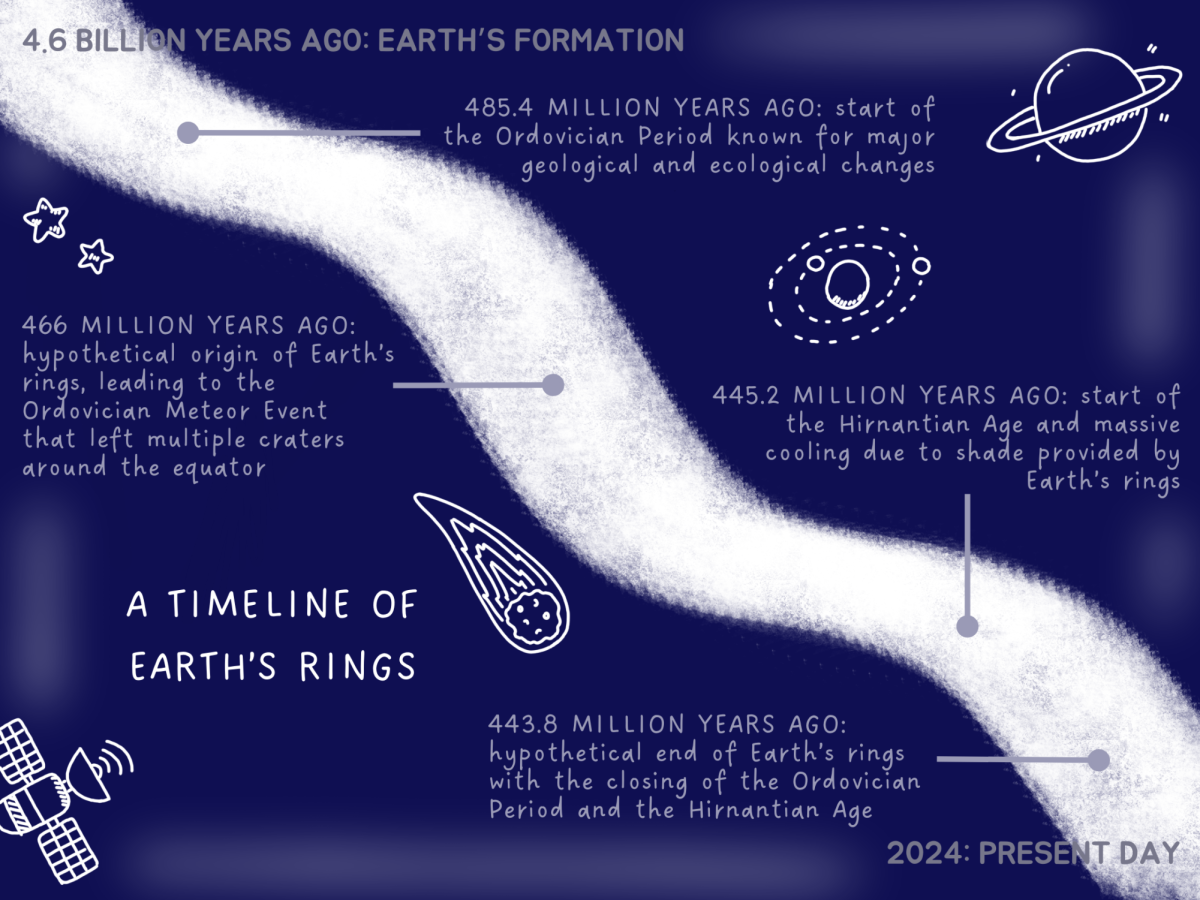Earth may have had rings, like the ones seen on Saturn, approximately 466 million years ago, according to research set to be published in the Earth and Planetary Sciences Letters on Nov. 15. If true, the rings could also be associated with the cooling of the Hirnantian Ice Age at the end of the Ordovician period, helping scientists understand previous climate events to predict future ones.
The rings were discovered through an analysis of 21 crater sites around the world, which researchers believe were located directly beneath the rings, according to Forbes. The meteorites discovered in those locations were much more exposed to radiation, likely due to the high irradiation levels in space, compared to typical meteorite remenants found farther from the equator.
“My first reaction was that I was very excited because I thought that it was such an interesting discovery,” astronomy enthusiast and junior Peri Akalin said. “Scientists and astronomers can make such big discoveries now about the planet from so many millions of years ago. I think this is going to have a lot of impact on how we understand astronomy and planetary sciences because it’s not only a pretty big discovery, but as we get more information about this, it could lead to new discoveries and a better understanding of both our own planet and other planets.”
Scientists estimate that only five percent of space has been explored by humans, and discoveries on debris rings give insight on how particles scatter light and heat in space, which subsequently affects climate patterns, according to the Natural History Museum.
Previously, scientists accepted the Giant Impact Theory as a source for a possible ring system. The hypothesis stated that the planet Theia collided with Earth 4.5 billion years ago, and the remnants were the Moon and debris of rock and dust that would have encircled the Earth temporarily. The latter part of the Giant Impact Theory has not yet been disproven by the prediction of more recent rings.
“I think there was some kind of theory that this ring system could have caused a period of glaciation on the planet, which I know there was a mass extinction in the Ordovician period that was likely due to that,” Science Olympiad astronomy competitor and junior Sandy Shanmuga-Nathan said. “So to put it simply, a ring system is having a bunch of really small moons almost orbiting your planet. The fact that Earth had that it’s likely due to a collision or some other ring forming process, and that owes a lot to how Earth developed, to how it is now and opens up a lot of areas for future study.”
In the future, scientists will continue looking for more evidence to supplement this theory and determine whether additional rings could potentially form from space debris.





